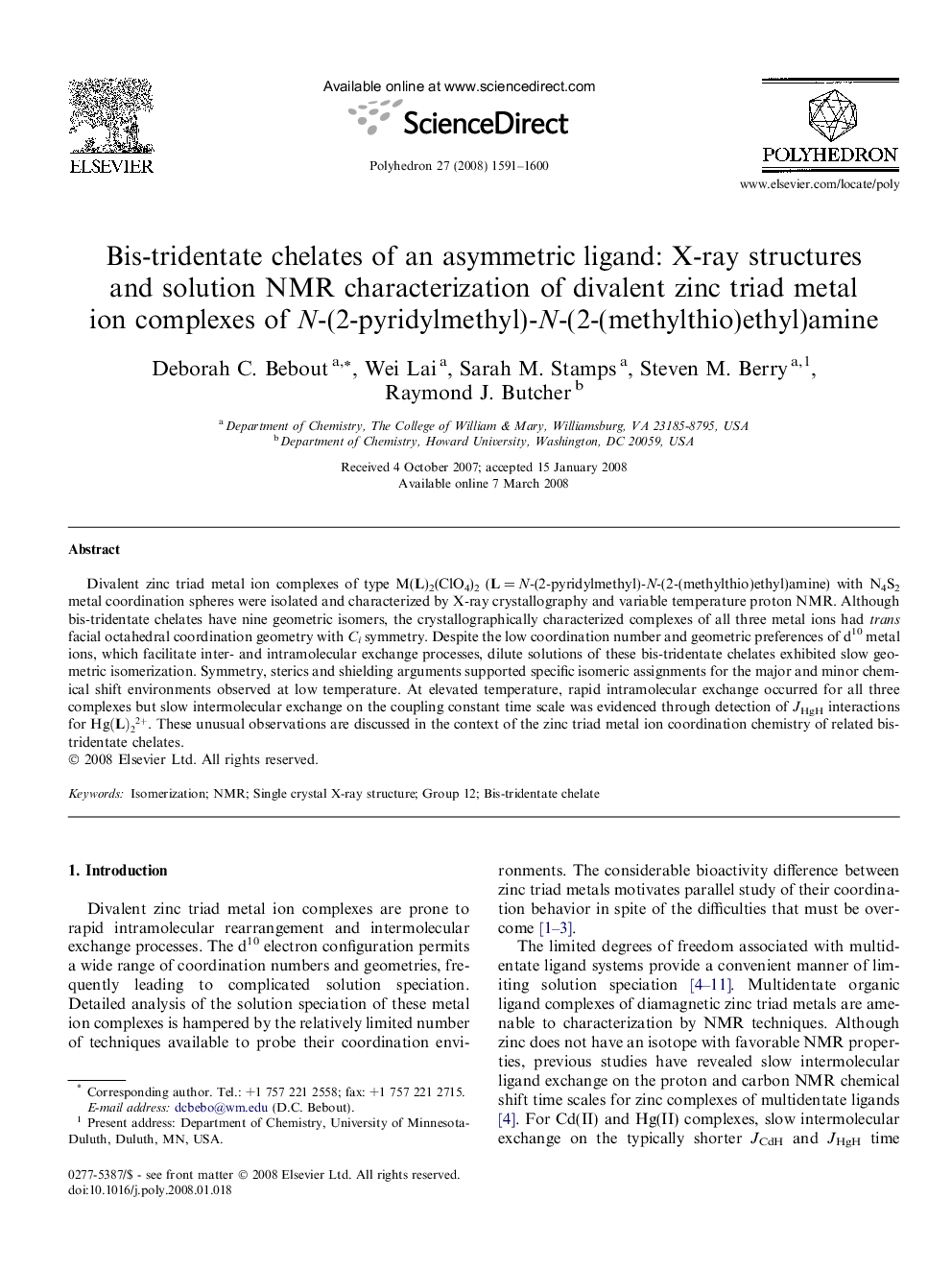| Article ID | Journal | Published Year | Pages | File Type |
|---|---|---|---|---|
| 1340465 | Polyhedron | 2008 | 10 Pages |
Divalent zinc triad metal ion complexes of type M(L)2(ClO4)2 (L = N-(2-pyridylmethyl)-N-(2-(methylthio)ethyl)amine) with N4S2 metal coordination spheres were isolated and characterized by X-ray crystallography and variable temperature proton NMR. Although bis-tridentate chelates have nine geometric isomers, the crystallographically characterized complexes of all three metal ions had trans facial octahedral coordination geometry with Ci symmetry. Despite the low coordination number and geometric preferences of d10 metal ions, which facilitate inter- and intramolecular exchange processes, dilute solutions of these bis-tridentate chelates exhibited slow geometric isomerization. Symmetry, sterics and shielding arguments supported specific isomeric assignments for the major and minor chemical shift environments observed at low temperature. At elevated temperature, rapid intramolecular exchange occurred for all three complexes but slow intermolecular exchange on the coupling constant time scale was evidenced through detection of JHgH interactions for Hg(L)22+. These unusual observations are discussed in the context of the zinc triad metal ion coordination chemistry of related bis-tridentate chelates.
Graphical abstractAn asymmetric N2S ligand formed trans facial bis-tridentate chelates of group 12 metal ions in the solid state. Unlike previously reported bis-tridentate chelates, slow exchange conditions on the δH time scale could be established in CD3CN for the trans facial and slightly more thermodynamically stable cis forms.Figure optionsDownload full-size imageDownload as PowerPoint slide
